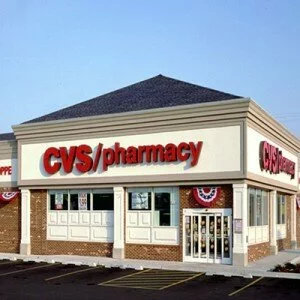A North Dakota news site reports that drug prices are under the microscope in the state as legislators consider repealing a law that prevents most chain pharmacies from competing there. The law requires pharmacies to be majority-owned by North Dakota licensed pharmacists.
Supporters of repeal argue that allowing the big retailers to offer prescription drugs will encourage price competition and result in lower costs for consumers. To test this, The Forum of Fargo-Moorhead “took the five most common prescription drugs in North Dakota and compared their prices at four area pharmacies – two in North Dakota and two in Minnesota.”
The results showed that North Dakotans weren’t paying more for these drugs than Minnesotans, after all. However, there was something striking about the survey. It revealed huge, seemingly random variation in pricing for top-selling drugs. The location of the pharmacy was not a factor in these variations.
For example, some pharmacies in both states sold the cholesterol drug Simvastin (20 mg, 30 count) for less than $20, whereas a North Dakota CVS was selling the same medication (same dosage, same quantity) for $54.59.
The reality is that large chains can help with the prices of some generics — the Wal-Mart $4 drug program has been matched by an increasing number of competitors — but there is still little real price competition for the vast majority of prescription drugs, whether or not national chains are part of the mix.
There are two main reasons for this:
1. Pharmaceutical companies have patents that give them virtual monopolies on the sale of brand-name drugs in the United States, allowing them to charge distributors whatever they wish.
2. Pharmacies are not transparent in sharing their prices on most drugs with consumers — meaning it is difficult to comparison shop, a fact that results in inefficient, inflated pricing.
For both these reasons, eDrugSearch.com is the better option — particularly for the tens of millions of Americans without health insurance.
-
-
Search Blog Posts
-
Save Even More Money!
-

-
Trending Content
-
Watch our YouTube Video
-
Categories
Big Pharma Buy prescriptions online Canadian drugs Drug costs Drug reimportation Drug safety eDrugSearch.com FDA Health 2.0 Healthcare100 Healthcare blogs Healthcare solutions Low-cost drugs Medicare Part D Merck Online pharmacies Online pharmacy safety Pfizer Pharma bloggers Pharmaceutical companies Pharmaceutical marketing Pharma cheerleaders Prescription drug abuse Prescription drug prices Prescription drugs Prescriptions Wal-Mart drug plan -
Blogroll
- Bullet Wisdom
- Bulverde Business Directory
- Christian Counseling San Antonio Tx.
- Christian Schools in San Antonio Texas
- Christian Social Network
- Christians United for Israel
- DrugWonks.com
- Eye on FDA
- GoozNews
- Health 2.0
- Hunting Forum
- In the Pipeline
- Jesus Christ Our King
- John Hagee Ministries
- Kevin, M.D.
- Local Search Marketing
- My $299 Website
- Pharm Aid
- Pharma Marketing
- PharmaGossip
- Pharmalot
- San Antonio Asphalt
- San Antonio Life Insurance
- San Antonio Pressure Washing
- Storage New Braunfels Tx
- Texas Wildlife Supply
- The Angry Pharmacist
- The Health Care Blog
- The Peter Rost Blog
- World Vision
-
Tags
big pharma Canadian drugs canadian pharmacies canadian pharmacy consumer reports craig newmark divine healing Drug costs drug prices Drug reimportation eDrugSearch.com FDA Fosamax Generic drugs healing scriptures Health 2.0 healthcare reform Hypertension Jehova Rophe Jesus Christ Lipitor Metformin miracles nabp online pharmacy dictionary online prescriptions osteoporosis peter rost Pharmacies pharmacists pharmacychecker pharmacy spam phrma Prescription drugs prescription medication Proverbs 3:5-8 reimportation relenza Roche saving money SSRI swine flu Tamiflu The Great Physician The Lord our Healer -
Recent Tweets
- eDrugSearch Blog Rank on the Healthcare100: http://t.co/VJprL4LZWl [#]
- New blog posting, How to Get Prescription Medication Without Health Insurance - http://t.co/1ZdLavB87d [#]
- 10 Tips for Safer Prescription Drug Use http://t.co/GFnMIN1mCy [#]
- New blog posting, How to Beat High Drug Prices By Comparing Low Cost Pharmacies - http://t.co/fsZ0stNZme [#]
-
Archives
-
Recent Comments
- Heather Sturges on What is the Difference Between Effexor and Cymbalta?
- Lupe Machol on Cost of diabetes drugs has nearly doubled
- Manpower For Hospital In Pune on Why is Medicine Cheaper in Canada?
- Jen on How a Canadian Pharmacy Can Help You Offset Drug Price Hikes
- nino iarajuli on Vending machine dispenses prescription drugs
